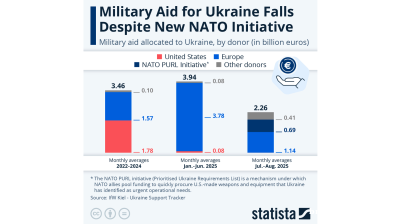Russia's GDP fell by 8.5% in 2Q20 due the lockdown quarantine measures imposed across the country reeling from the coronacrisis.
The second quarter of the year took the full brunt of the crisis as many industries were shuttered by the restrictive measures in connection with the coronavirus (COVID-19) pandemic. However, the fall was not quite as bad as the corresponding falls in GDP during the previous 1998 and 2009 crises.
The decline in GDP in the second quarter, according to preliminary estimates, amounted to 8.5% year on year after growing by 1.6% in the first quarter, according to Rosstat.
Rosstat data turned out to be better than the previous predictions from the Ministry of Economic Development, which estimated the drop in GDP in the second quarter at 9.6%, and better than the Central Bank's (CBR) expectations of a decline of 9-10%.
The "quarantine quarter” performed better than the crisis in 1998, where the most significant decline was recorded in the fourth quarter of 9.1%, and during the global financial crisis a decade later, where the second quarter was also the worst of the year with a drop of 11.2%.
All of Russia’s sectors contracted with the exception of agriculture. The maximum drops were noted in the commodity sector, retail trade, passenger transportation, as well as in industries related to the provision of services to the population. The least affected sectors were manufacturing, construction, wholesale and cargo transportation, as well as in the provision of electricity, gas and steam and air conditioning.
As bne IntelliNews reported, a non-payment crisis was expected to appear in the utilities sector, but failed to happen.
Agriculture was the only sector that continued to grow, putting in a 3.1% y/y gain.
Industrial production was also down by 8.5% y/y, while the oil sector was also hit by the new OPEC+ deal and saw output decline by 10.3%. Retail turnover decreased by 16.6%, passenger turnover by 79.0%, catering by 48.9%, and the volume of paid services to the population by 37.2%.
"While the slump in GDP in 2Q was fully expected, its lower reading is positive, as it means that [the] 2020 decline in the economy could be less dramatic," BCS Global Markets commented on August 12, noting that the 8.5% y/y decline was lower than official and consensus forecasts and significantly below BCS GM estimate of -10.5% y/y.
However, the chief economist of BCS GM, Vladimir Tikhomirov, warns that 2Q20 GDP could be offset by a decline in 2H20.
"In our 2020 forecast, we expected to see a deeper slide in GDP in 2Q but a more robust recovery in 2H than suggested by the latest macro data," Tikhomirov notes.
Still, BCS GM reiterates the 2020 GDP decline forecast of 3.8% y/y, and believe that better-than-expected economic performance in 2Q20 will be offset by a weaker dynamic in 2H20. "Still, our 2020 GDP estimate remains more optimistic than the consensus (-4.2%) and the official forecast (-4.8%)," Vladimir Tikhomirov reminds.
In the June version of the forecast, the Ministry of Economic Development and Trade predicted a drop in the Russian Federation's (RF) GDP by 4.8% in 2020; an increase in 2021 by 3.2%; in 2022 by 2.9%; and in 2023 by 3.1%.
Some time ago, the CBR narrowed the forecast interval for a fall in RF GDP in 2020 to 4.5-5.5% from 4-6%, according to the previous version. In 2021, the CBR is now anticipating a rebound of the economy by 3.5-4.5% instead of the previous forecast of growth of 2.8-4.8%; in 2022 it predicts growth of 2.5-3.5% instead of the previous interval of 1.5-3.5%.
The consensus forecast, compiled by Interfax based on a survey of analysts of leading investment companies, banks and think-tanks at the end of July, in terms of GDP dynamics for 2020 was slightly better than official expectations and assumed a decline of 4.2%, followed by an increase of 3.1% in 2021.
Data

India’s retail payment revolution
India’s payments landscape has reached a pivotal stage, with digital transactions now accounting for 99.8% of all retail payments.

Military aid for Ukraine falls despite new Nato PURL initiative – Statista
The Kiel Institute for the World Economy found that military aid to Ukraine dropped sharply in July and August compared to previous months, despite the implementation of the Nato PURL initiative.

IMF cuts Russia’s 2025 growth forecast to 0.6%, leaves Ukraine's unchanged at 2%
The International Monetary Fund has lowered its forecast for Russia’s economic growth in 2025 to just 0.6%, marking the second-steepest downgrade among major economies, even as it raised its global outlook.

Russia's PMI indices plummet as economy cools
Russia’s private sector entered deeper contraction in September, as both services and manufacturing activity declined, according to the latest PMI data published by S&P Global.




